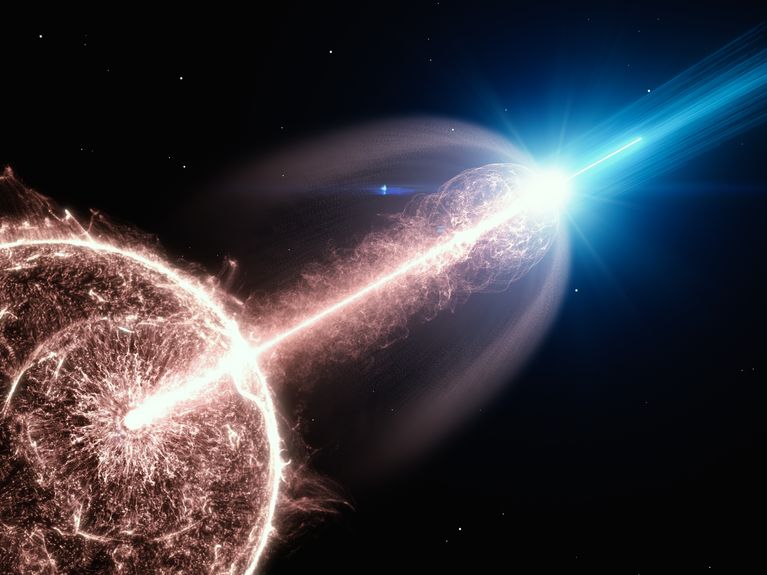
Challenge #50
Deciphering the origin of cosmic accelerators.
At the Helmholtz centers DESY and KIT, scientists are working to identify the cosmic sources that accelerate particles to unimaginably high energies. These reach our galaxy and the Earth from the depths of the universe.
Participating centers
The universe is the backdrop for collisions and explosions of monumental proportions: stars collide and explode, are swallowed up by extremely massive black holes at the center of galaxies, and black holes themselves crash into each other. In the process, matter in the form of atomic nuclei, neutrinos, and gamma rays is hurled into the vastness of the universe, accelerating particles to extreme energies. To produce particles with the highest energies ever observed using state-of-the-art accelerators, the world's best particle accelerator, the LHC at CERN, would have to be built with the circumference of the planet Mercury’s orbit.
How these cosmic acceleration processes occur is not yet theoretically understood, nor have the astrophysical objects, such as supermassive black holes or neutron stars, in which they take place been identified. Our scientists are engaged in an intensive research program to understand the theoretical basis for these acceleration processes, but also to provide unequivocal evidence about the nature of the accelerators.
(Header: DESY, Science Communication Lab)